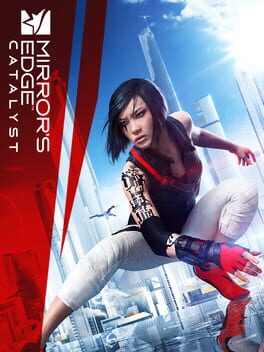The unique selling point for Mirror’s Edge may have been its free-flowing parkour gameplay, but the minimalist aesthetic is what really stuck with people. Clean white buildings highlighted with guiding streaks of red, the only sound being footsteps and the wind rushing by, it was a beautiful thing to experience in spite of the clunky level design. It makes sense that the idea for a sequel would be rooted in expanding the city, and giving players more ways to enjoy free-running outside the constraints of linear stages. This new open-world version of the City of Glass is filled with race challenges, user-created trials, and sidequests, rewarding players with XP they can use to unlock new skills and bonuses. The story has been expanded so every area could be featured, and the production value has been increased across the board from the AA feeling of the first game. If that all sounds great, then it’s easy to sympathize with how the developers completely missed the point with Catalyst. Mirror’s Edge had a minimalist aesthetic, but that didn’t just mean the buildings were clean, it extended to the entirety of the design. The player’s moveset was a small but tightly designed set of functions, removing some of them to reintroduce as unlockable skills impedes flow and introduces unnecessary clutter. All the popups for challenges, missions, and collectables, the constant dialog in your ear, they’re completely contradictory to the focused simplicity that made the first game memorable. It’s not like having more content or skills to unlock is necessarily a bad thing, but a focused challenge with a precise difficulty curve and unifying aesthetic will always be more memorable than a lower-quality endless buffet. The core gameplay may remain intact, but when that’s just one piece of a compromised core experience, the design falls apart regardless.
